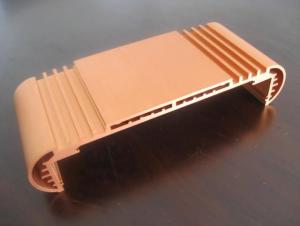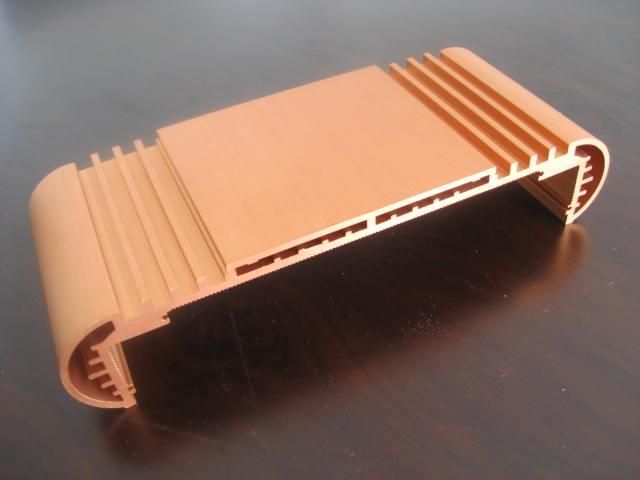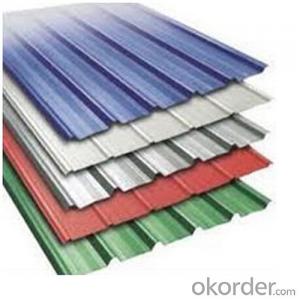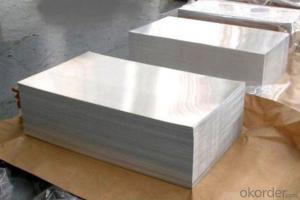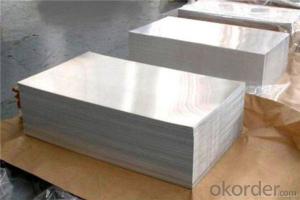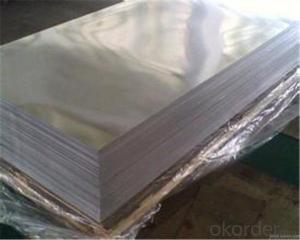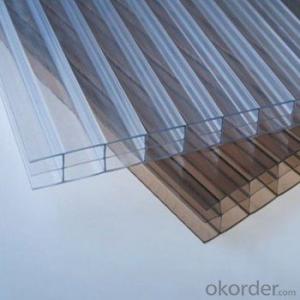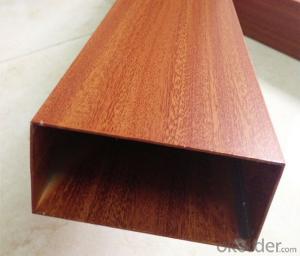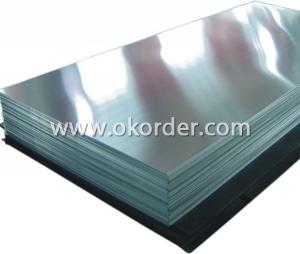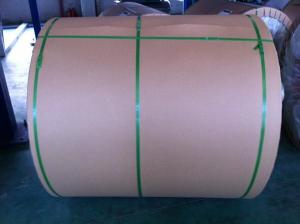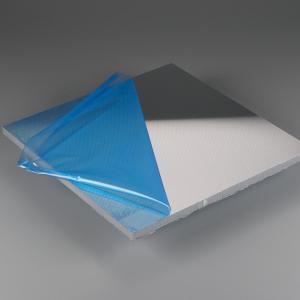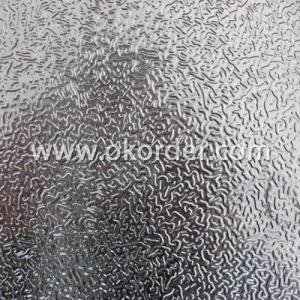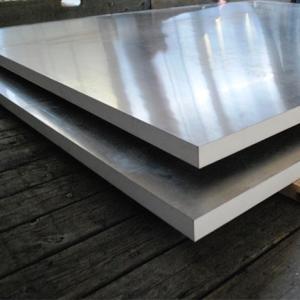Aluminum Sheets in Arizona - Aluminium Profile with Sand Blasting Treatment SA6
- Loading Port:
- Shanghai
- Payment Terms:
- TT OR LC
- Min Order Qty:
- 20 m.t.
- Supply Capability:
- 2000 m.t./month
OKorder Service Pledge
OKorder Financial Service
You Might Also Like
1.Structure of Aluminium Profile with Sand Blasting Treatment SA6 Description:
Anodizing (also spelled anodising, particularly in the UK and Australia) is an electrolytic passivation process used to increase the thickness of the natural oxide layer on the surface of metal parts. Anodized aluminium surfaces, for example, are harder than aluminium but have low to moderate wear resistance that can be improved with increasing thickness or by applying suitable sealing substances.
2.Main Features of theAluminium Profile with Sand Blasting Treatment SA6:
High corrosion-resistance;
weather-resistance;
heat-resistance;
alkali-resistance and impact-resistance properties.
3.Aluminium Profile with Sand Blasting Treatment SA6 Images:
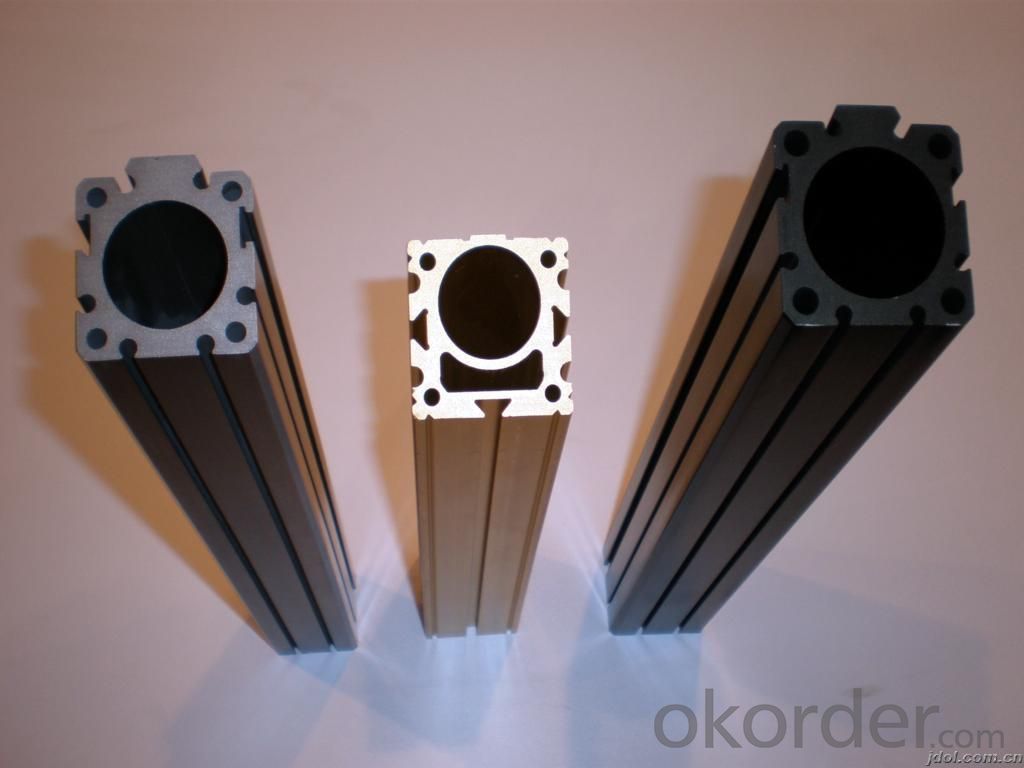
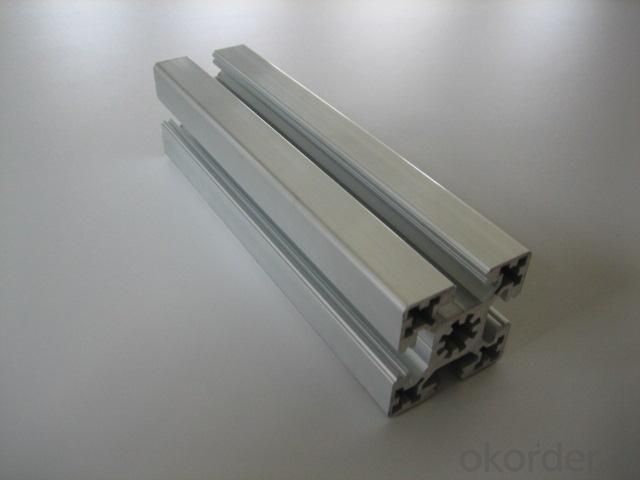
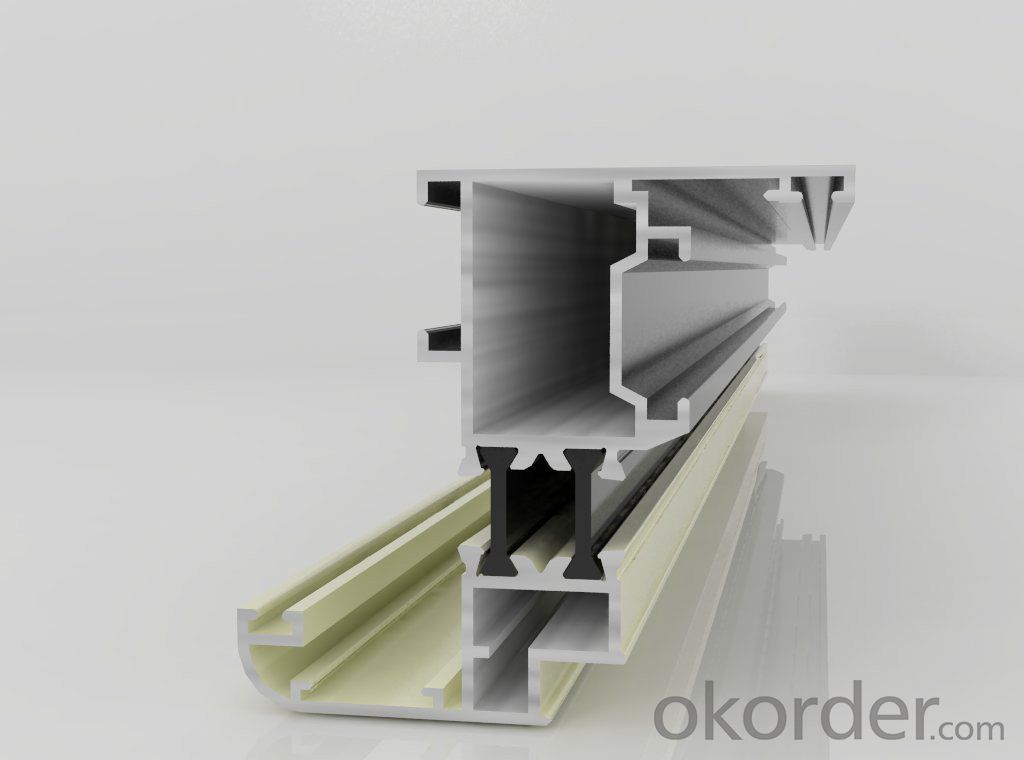
4.Aluminium Profile with Sand Blasting Treatment SA6 Specification:
1. Material: 6063,6061,6060,6005,6005A,etc.
2. Temper: T5 or T6
3. Finish: Mill finish, anodizing, powder coating, electrophoresis, wooden transfer or pvdf/carbon-flouride coated, polishing, brushing, sand blasting
4. Various colors: Silver, bronze, black, gold, blue, grey, champagne, bright, etc.
5. Machining: Cutting, punching, drilling, tapping, milling, bending, welding, CNC etc.
5.FAQ:
①How about your company?
A world class manufacturer & supplier of castings forging in carbon steel and alloy steel,is one of the large-scale professional investment casting production bases in China, consisting of both casting foundry forging and machining factory. Annually more than 8000 tons Precision casting and forging parts are exported to markets in Europe, America and Japan. OEM casting and forging service available according to customer’s requirements.
②How to guarantee the quality of the products?
We have established the international advanced quality management system,every link from raw material to final product we have strict quality test;We resolutely put an end to unqualified products flowing into the market. At the same time, we will provide necessary follow-up service assurance.
- Q: Can aluminum sheets be an alternative to wood in certain applications?
- Yes, aluminum sheets can definitely be an alternative to wood in certain applications. Aluminum has many advantages over wood, making it a popular choice in various industries. Firstly, aluminum is highly durable and long-lasting, as it is resistant to corrosion, rot, and pests. This makes it ideal for outdoor applications or areas with high moisture content. Additionally, aluminum sheets are lightweight, making them easier to handle and transport compared to wood. They also have high strength-to-weight ratio, meaning they can withstand heavy loads without compromising structural integrity. Furthermore, aluminum is a sustainable material as it can be recycled indefinitely without losing its properties. In contrast, wood requires cutting down trees, which has environmental implications. Aluminum sheets also offer design flexibility, as they can be easily shaped, bent, and formed into complex structures, allowing for creative and innovative applications. Moreover, aluminum has excellent thermal and electrical conductivity, making it suitable for applications where heat dissipation or electrical conductivity is important. Despite these advantages, it is important to note that wood still has its unique characteristics and benefits in certain applications. Wood creates a warm and natural aesthetic that aluminum cannot replicate, and it is often preferred in interior design or furniture manufacturing. Additionally, wood is a renewable resource and has excellent insulating properties, which can be advantageous in construction or insulation applications. Therefore, while aluminum sheets can be a great alternative to wood in many cases, the choice ultimately depends on the specific requirements and desired outcomes of the application.
- Q: Can aluminum sheets be used in food packaging?
- Indeed, aluminum sheets find widespread application in the realm of food packaging. The utilization of aluminum in this context is prevalent owing to its exceptional capability to shield food from detrimental elements like light, oxygen, moisture, and other external agents that may cause spoilage or contamination. Notably, aluminum sheets possess the qualities of being lightweight, long-lasting, and resistant to corrosion, rendering them perfectly suitable for an array of food packaging formats, including foil wraps, containers, trays, and pouches. Moreover, the recyclability of aluminum further solidifies its status as an eco-friendly option for food packaging.
- Q: What are the common sizes of aluminum sheets?
- The industry and application determine the common sizes of aluminum sheets. However, there are several standard sizes that are readily available. For general fabrication and construction, aluminum sheets typically range in thickness from 0.020 inches to 0.125 inches. These sheets are commonly found in sizes such as 4 feet by 8 feet, 4 feet by 10 feet, and 5 feet by 10 feet. In the automotive industry, aluminum sheets are frequently used for body panels and structural components. The sizes used in this sector can vary from 0.040 inches to 0.125 inches in thickness, with dimensions depending on the specific application or vehicle model. When it comes to aerospace applications, aluminum sheets are usually thinner and smaller. These sheets can be anywhere from 0.010 inches to 0.080 inches in thickness, with dimensions generally being smaller compared to other industries. It's important to note that while these sizes are common, custom sizes can also be manufactured to meet specific project requirements. Furthermore, specialized industries may have unique size requirements that differ from the general standards. Therefore, it is always advisable to consult suppliers or manufacturers to determine the most suitable size for a particular application.
- Q: Can aluminum sheets be used in the automotive industry?
- Yes, aluminum sheets can be used in the automotive industry. Aluminum is a lightweight and durable material that offers several advantages in automotive manufacturing. It is commonly used in the production of car bodies, hoods, doors, and other structural components. The use of aluminum sheets in automobiles helps to reduce the weight of the vehicle, enhancing fuel efficiency and improving performance. Additionally, aluminum has excellent corrosion resistance properties, which is crucial for vehicles exposed to harsh weather conditions. Furthermore, aluminum sheets can be easily formed, welded, and joined, making them versatile and suitable for various automotive applications. Overall, the automotive industry widely embraces the use of aluminum sheets due to their numerous benefits.
- Q: What is the fire rating of 101 aluminum sheets?
- The fire rating of 101 aluminum sheets is typically dependent on the particular alloy and thickness of the sheets. Due to its low melting point of 660 degrees Celsius (1220 degrees Fahrenheit), aluminum has the potential to deform or melt when exposed to intense heat. Nevertheless, it is important to highlight that aluminum is not flammable and does not aid in the propagation of fire. Fire resistance can be improved by applying fire-resistant coatings or by incorporating it with other fire-resistant substances. In conclusion, it is crucial to seek advice from manufacturers or industry professionals to ascertain the fire rating of specific 101 aluminum sheets.
- Q: This question asks about the key factors to consider when buying aluminum sheets, including material properties, thickness, surface finish, and other relevant details.
- <p>When purchasing aluminum sheets, consider the following specifications: 1) Alloy type, which determines properties like strength and corrosion resistance; 2) Thickness, measured in millimeters, affecting the sheet's durability and application; 3) Width and length, which should match your project requirements; 4) Surface finish, such as mill finish, anodized, or painted, which impacts aesthetics and protection; 5) Temper, indicating the hardness and formability of the sheet; 6) Certifications, ensuring the sheet meets industry standards; 7) Supplier reputation and customer reviews for quality assurance. These factors will help you select the right aluminum sheet for your specific needs.</p>
- Q: What is the difference between aluminum plate and aluminum-plastic plate?
- The difference is as follows: 1, different layers: single aluminum plate is divided into two layers, the surface layer is aluminum skin, second layers of plastic, aluminum plate is divided into three layers: the surface layer and the third layer is an aluminum sheet, the middle is plastic, or aluminum plate than single aluminum plate a layer of aluminum skin; 2, the quality of different because: aluminum sheet aluminum plastic board less than a layer of aluminum skin, so the single aluminum plate than the aluminum plate quality will certainly be worse; 3, the price is different: single aluminum plate is cheaper than aluminum plate, aluminum plate positioning for low-grade, aluminum-plastic plate according to the quality and thickness of plastic and aluminum skin into the middle different grades, but certainly more than the single aluminum plate and expensive; 4, the construction effect is certainly not the same: a plastic plate can be slotted, bending turning construction construction, suitable for a variety of occasions, but not the single aluminum plate slot, bending, and because the bottom is plastic, such as plastic bonding effect Board.
- Q: What are the different methods of surface passivation for aluminum sheets?
- There are several methods of surface passivation for aluminum sheets, including anodizing, chromate conversion coating, and organic coatings. Anodizing involves creating a protective oxide layer on the surface of the aluminum through an electrochemical process. Chromate conversion coating is a chemical treatment that converts the aluminum surface into a thin chromate film, providing corrosion resistance. Organic coatings, such as paints or lacquers, can also be applied to aluminum sheets to provide a protective barrier against moisture and other environmental elements.
- Q: Are 101 aluminum sheets suitable for agricultural machinery?
- Indeed, agricultural machinery finds suitability in a total of 101 aluminum sheets. Aluminum, a material that is both versatile and lightweight, brings forth numerous advantages for agricultural machinery. Its outstanding resistance to corrosion becomes particularly vital for equipment that confronts diverse weather conditions and chemicals commonly encountered in the agricultural industry. Furthermore, the strength-to-weight ratio of aluminum proves to be advantageous, permitting an augmented payload capacity and enhanced fuel efficiency. Moreover, the malleability of aluminum allows manufacturers to fashion intricate shapes and designs for machinery components. All in all, the durability, corrosion resistance, and versatility demanded by agricultural machinery are adequately met by 101 aluminum sheets.
- Q: What are the advantages of using aluminum sheets?
- There are several advantages of using aluminum sheets in various applications. Firstly, aluminum sheets are lightweight, making them easy to transport and handle. This characteristic makes them ideal for industries where weight is a crucial factor, such as aerospace and automotive industries. Secondly, aluminum sheets have excellent corrosion resistance properties. They are naturally resistant to rust and can withstand exposure to harsh environmental conditions, including moisture, chemicals, and UV rays. This makes them highly durable and long-lasting, reducing the need for frequent maintenance and replacements. Furthermore, aluminum sheets are highly malleable and can be easily formed into different shapes and sizes. This flexibility allows for customization and versatility in design, enabling manufacturers to create complex structures and products. In addition, aluminum sheets have excellent thermal and electrical conductivity. They can efficiently dissipate heat and conduct electricity, making them suitable for applications in the electrical, heating, and cooling industries. Another advantage of using aluminum sheets is their aesthetic appeal. Aluminum has a sleek and modern appearance, making it a popular choice for architectural and interior design applications. It can be easily painted or coated to achieve different colors and finishes, further enhancing its visual appeal. Lastly, aluminum is a sustainable material. It is 100% recyclable and can be repeatedly melted and reformed without losing its properties. This makes aluminum sheets an environmentally friendly choice, contributing to the reduction of waste and carbon footprint. Overall, the advantages of using aluminum sheets include their lightweight nature, corrosion resistance, malleability, thermal and electrical conductivity, aesthetic appeal, and sustainability. These qualities make aluminum sheets a preferred material in various industries and applications.
Send your message to us
Aluminum Sheets in Arizona - Aluminium Profile with Sand Blasting Treatment SA6
- Loading Port:
- Shanghai
- Payment Terms:
- TT OR LC
- Min Order Qty:
- 20 m.t.
- Supply Capability:
- 2000 m.t./month
OKorder Service Pledge
OKorder Financial Service
Similar products
Hot products
Hot Searches
Related keywords
